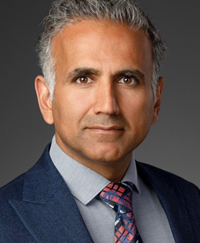题目:Structural Integrity and Fatigue of Welded Components and Structures
时间:2025年10月15日 10:00-11:30
地点:suncitygroup太阳集团 振华会议室
邀请人:李永兵 教授、刘恢弘 副教授(薄板结构制造研究所)
Biography

Dr.-Ing. Majid Farajian, received his MSc in Mechanics of Materials from the Royal Institute of Technology (KTH) in Stockholm, Sweden. In 2011 he received his PhD from the Faculty of Mechanical Engineering at the University of Braunschweig, Germany. After two years of postdoctoral work, he continued his work in the field of fatigue and residual stresses at the Fraunhofer Institute for Mechanics of Materials IWM in Freiburg, Germany and headed the “Fatigue” group at the Fraunhofer IWM until 2020. Since 2020 he has been the head of the Department for design and construction at the German Welding Society GSI in Duisburg. As Chairman of Commission XIII “Fatigue of Welded Components and Structures” and Chairman of Subcommission XIII-SC-B “Fatigue Improvement Techniques” he takes responsibilities within the International Institute of Welding IIW.
For over two decades, he has worked in research, teaching, and scientific management at leading academic and non-academic institutions in Sweden, Germany, and Switzerland. His career has encompassed the leadership of research groups and departments, the successful acquisition and review of competitive funding from renowned organisations such as the German Research Foundation (DFG), the Fraunhofer Society, the German Federation of Industrial Research Associa-tions (AiF), and the European Research Council (ERC). In addition, he has carried out numerous research and development projects in close collaboration with industrial partners in mechanical engineering, materials science, manufacturing technologies, energy, and medical engineering, as well as in the automotive, aerospace, and rail sectors.
A central focus of his work has always been promoting young researchers. As a supervisor of 30 bachelor’s and master’s theses and 7 doctoral dissertations, and postdoctoral projects, he places great importance on combining scientific knowledge with creativity, responsibility, and teamwork. Many of his works have been published in 80 papers and book chapters, in leading international journals and books and presented at renowned conferences. As a university lecturer, chair of international expert committees, and editor-in-chief of a peerreviewed journal of the International Journal of Materials Joining, he has also sought to bridge the gap between teaching, research, and the global scientific community.
Abstract
Weld fatigue strength is currently the bottleneck to designing high performance and lightweight welded structures using advanced materials. In addition to loading conditions, environmental aspects, geometrical features, and defects, it has been proven that studying the influence of residual stresses on fatigue performance is indispensable. The extent of the influence is however a matter of discussion. A deeper insight into the source of the welding residual stresses based on sound physical principles would increase the awareness of the extent of their true threat to structural safety.
For an accurate estimation of the fatigue performance of welded joints, not only the initial residual stress field but also its variation underload is decisive. The portion of residual stress which stays stable can shift the load stress range much the same way as the mean stresses do in fatigue loading. The relaxation of residual stresses during fatigue loading however reduces this hazard to the structural health. That is, before considering the influence of residual stresses in fatigue, the effect of fatigue on residual stresses should be understood. The accumulated knowledge because of research in the field of residual stresses in all the industrial disciplines during the last 100 years is currently being used as an engineering tool for improving fatigue properties of the welds. The potentials of this engineering tool in designing and constructing new welded structures out of higher strength materials is discussed within the frame of “Residual Stress Engineering” at the end of this entry.

